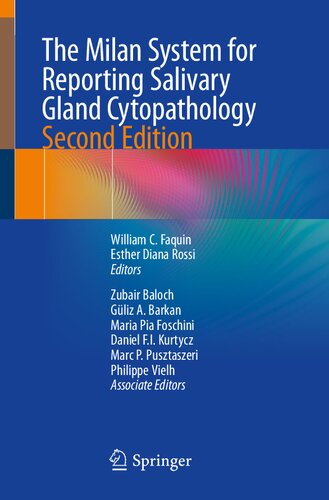

Most ebook files are in PDF format, so you can easily read them using various software such as Foxit Reader or directly on the Google Chrome browser.
Some ebook files are released by publishers in other formats such as .awz, .mobi, .epub, .fb2, etc. You may need to install specific software to read these formats on mobile/PC, such as Calibre.
Please read the tutorial at this link: https://ebookbell.com/faq
We offer FREE conversion to the popular formats you request; however, this may take some time. Therefore, right after payment, please email us, and we will try to provide the service as quickly as possible.
For some exceptional file formats or broken links (if any), please refrain from opening any disputes. Instead, email us first, and we will try to assist within a maximum of 6 hours.
EbookBell Team

4.1
70 reviewsThe Second Edition of The Milan System for Reporting Salivary Gland Cytopathology, like the First Edition, represents a collaborative effort by a multidisciplinary group of cytopathologists, surgical pathologists, molecular pathologists, radiologists, and head and neck surgeons. This international group shares the goal of creating a practical and uniform reporting system for salivary gland fine needle aspiration (FNA). This book is organized into six general diagnostic categories: “Non-Diagnostic,” “Non-Neoplastic,” “Atypia of Undetermined Significance (AUS),” “Neoplasm: Benign,” “Neoplasm: Salivary Gland Neoplasm of Uncertain Malignant Potential (SUMP),” “Suspicious for Malignancy,” and “Malignant.” It includes definitions, morphologic criteria, and explanations for each of the diagnostic categories. Specific chapters are dedicated to the application of the latest available ancillary studies, radiologic features of salivary gland lesions, clinical management, and histological considerations including updates from the most recent 5th Edition WHO blue book.
The Milan System for Reporting Salivary Gland Cytopathology 2nd Edition represents an essential step towards increasing the overall effectiveness of salivary gland FNA and fostering better communication between clinicians and between institutions to improve overall patient care.